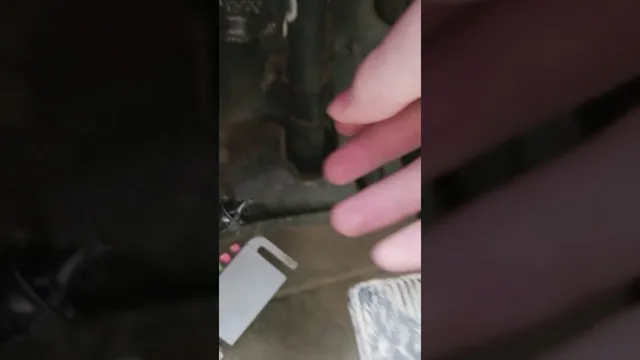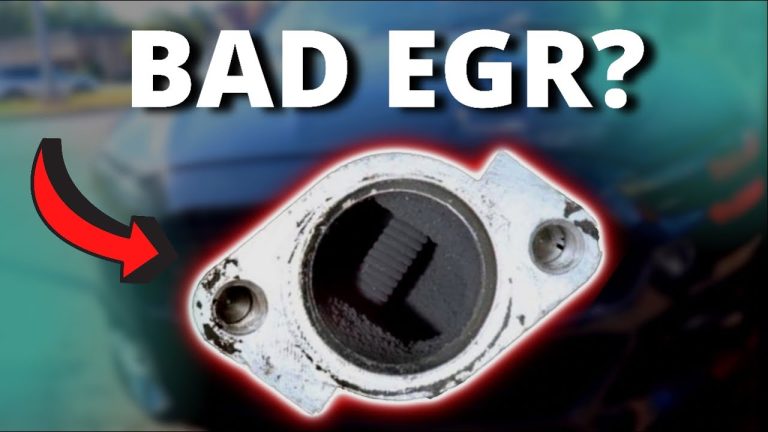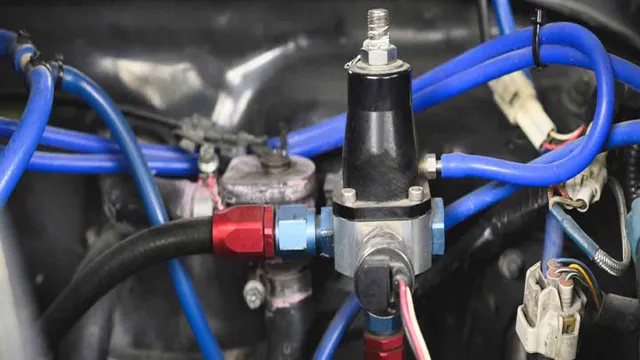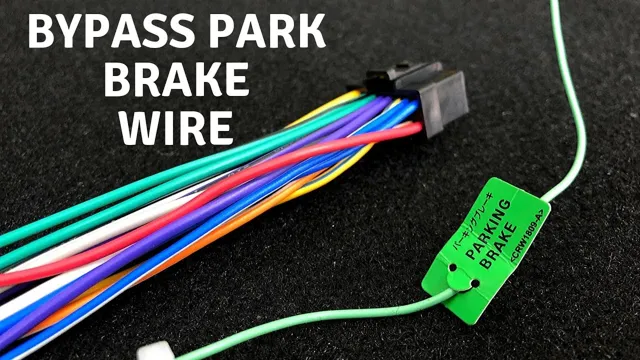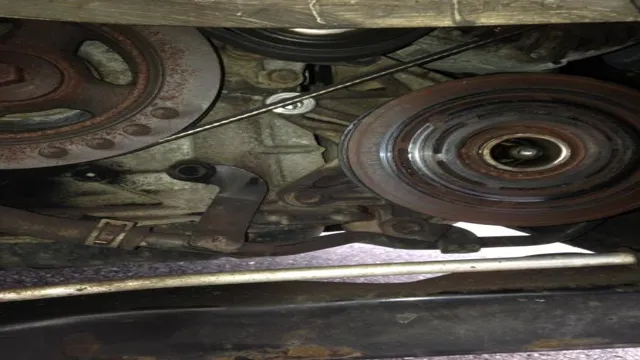Ultimate Guide: Bypassing a Clutch Safety Switch like a Pro!
Are you tired of your vehicle stalling every time you engage the clutch? Are you looking for a way to bypass the clutch safety switch and take control of your vehicle? If so, you’ve come to the right place! For many car owners, the clutch safety switch can be a constant headache. It’s designed to prevent the vehicle from starting unless the clutch pedal is fully depressed. However, it can malfunction and cause the engine to stall when disengaging the clutch.
This can be both frustrating and dangerous, especially when driving in heavy traffic or on steep inclines. But don’t worry, bypassing the clutch safety switch is easier than you might think. With a few basic tools and a little know-how, you can disable this pesky safety feature and regain control of your vehicle.
In this DIY guide, we’ll walk you through the step-by-step process of bypassing the clutch safety switch. We’ll cover everything you need to know, from locating the switch to disconnecting and bypassing it. We’ll also provide some tips and tricks to ensure that your vehicle remains safe and reliable.
So, if you’re ready to take your driving experience to the next level, grab your tools and let’s get started!
Understanding Clutch Safety Switch
If you’re wondering how to bypass a clutch safety switch, first it’s important to understand what it does. This switch is designed to ensure that the vehicle will only start when the clutch pedal is fully depressed, ensuring that the driver is ready to shift into gear. However, over time, this switch can wear down or malfunction, leading to issues with starting the vehicle.
If you’re experiencing this problem, you may be wondering how to bypass the switch. While we don’t recommend this as a permanent solution, it’s possible to bypass the switch in order to start the vehicle. One method is to simply remove the switch and connect the two wires, but this is not safe and could lead to injury or damage to the vehicle.
If you must bypass the switch, it’s best to seek the help of a professional mechanic who can ensure that the process is done correctly and safely.
What is a clutch safety switch?
A clutch safety switch is an essential component of a vehicle’s overall safety system. It ensures that the engine cannot start unless the clutch is fully engaged, which prevents the car from lurching forward unexpectedly. Imagine trying to start your car without pressing down fully on the clutch; the engine would rev, but the car wouldn’t move, which could cause a dangerous situation.
Additionally, if the switch is faulty or malfunctioning, it can lead to other issues, such as stalling or even an inability to start. Therefore, it’s essential to keep an eye on this component and address any issues promptly. Overall, the clutch safety switch is a small but crucial part of a vehicle’s safety mechanism that helps keep drivers and passengers safe on the road.
Why is the clutch safety switch important?
Clutch safety switch The clutch safety switch is an important component that plays a crucial role in ensuring your safety while driving. It’s an electrical switch that is usually located under the clutch pedal. Its primary function is to prevent the engine from starting unless the clutch is fully depressed.
It does so by cutting off the power supply to the starter motor, which prevents the engine from cranking. This safety feature is especially important in manual transmission vehicles, where the driver needs to engage the clutch to change gears. The clutch safety switch ensures that you won’t accidentally start the vehicle in gear, which could lead to dangerous and costly accidents.
It’s important to ensure that your clutch safety switch is working correctly, as a faulty switch could cause starting problems or a failure to engage the starter motor altogether. A well-maintained clutch safety switch is critical for the safe operation of your vehicle.
Bypassing Clutch Safety Switch
If you’re experiencing issues with your clutch safety switch or simply want to bypass it, there are a few steps you can take. But before diving into the process, it’s essential to understand what a clutch safety switch is and what it’s used for. Essentially, this switch is a safety feature that prevents your vehicle from starting unless the clutch pedal is fully depressed.
So, if you’re having difficulty starting your vehicle, a faulty clutch safety switch might be the culprit. To bypass the switch, you’ll need to locate it under the hood and disconnect the wiring. Then, you can use a jumper wire to connect the two wires coming from the connector and start the engine without depressing the clutch pedal.
Keep in mind that disabling the clutch safety switch for extended periods could put you and other drivers at risk, so it’s important to only bypass it temporarily in emergency situations.
Necessary Precautions
When it comes to bypassing the clutch safety switch on your vehicle, it’s crucial to understand the potential risks involved. This safety feature is designed to prevent the engine from starting or running when the clutch isn’t engaged, which can prevent accidents and damage to your vehicle. However, some drivers choose to bypass this feature to start their vehicle without using the clutch.
While it may seem convenient, it can also be quite dangerous. If the switch is bypassed, the engine can start even if the vehicle is in gear, which can lead to unexpected movement and accidents. In addition, bypassing this safety feature can also lead to more significant problems in the long run, including damage to the transmission or other vital components.
So, before you consider bypassing the clutch safety switch, it’s essential to think about the potential consequences and decide whether the convenience is worth the risk.
Step-by-Step Guide to Bypass Clutch Safety Switch
If you’re looking to bypass your clutch safety switch, there are a few things to keep in mind. The clutch safety switch is an important safety feature that prevents your vehicle from starting unless the clutch pedal is fully depressed. However, if you’re experiencing issues with this switch or need to bypass it for other reasons, the process is relatively simple.
First, locate your clutch safety switch, which is typically located near the clutch pedal or in the engine bay. Next, using a wire or pliers, jump the two wires that connect to the switch. This will effectively bypass the switch, allowing you to start your vehicle without engaging the clutch.
However, keep in mind that bypassing this safety feature can be dangerous and should only be done in emergency situations or by a qualified mechanic. Stay safe on the road by taking care of your vehicle’s safety features, including the clutch safety switch.
Tools Required
If you’re experiencing issues with your car’s clutch safety switch, you may need to bypass it. The first step in bypassing the switch is to gather the necessary tools. You’ll need a wrench set, wire strippers, electrical tape, and a multimeter.
Once you have these items, you can start the process of bypassing the switch. It’s important to note that bypassing the clutch safety switch can be dangerous, as it eliminates an important safety feature. As such, it should only be done by experienced individuals who are confident in their ability to safely complete the task.
If you’re unsure about your ability to bypass the switch, it’s best to consult with a professional mechanic. To start the process of bypassing the switch, disconnect the negative terminal from the car’s battery. Then, locate the clutch safety switch, which is typically located near the clutch pedal or on the clutch master cylinder.
Use the multimeter to test the wires leading to and from the switch to determine which ones need to be bypassed. Once you’ve identified the wires that need to be bypassed, you can use the wire strippers to remove the insulation from the wire ends. Twist the stripped wire ends together and secure them with electrical tape.
Make sure the wires are tightly secured and that there is no chance of them coming loose. Finally, reconnect the negative terminal of the car’s battery and test the system to ensure that the switch has been successfully bypassed. If you encounter any issues, consult with a professional mechanic to ensure that the switch has been safely bypassed.
By following these steps, you can bypass your car’s clutch safety switch and get your vehicle back on the road in no time.
Other Options to Bypass Clutch Safety Switch
If you’re experiencing issues with your clutch safety switch and looking to bypass it, there are a few other options you can explore. One way to bypass the switch is to install a jumper wire that connects the two wires that were previously attached to the switch. However, this method may not be reliable and could potentially cause safety hazards.
Another option is to replace the clutch safety switch with a new one. This may involve some mechanical work, but it guarantees a safer and more long-term solution. It’s important to keep in mind that bypassing the clutch safety switch can be dangerous and may put yourself and other drivers at risk.
It’s always best to consult with a professional mechanic before attempting any modifications to your vehicle’s safety systems.
Manual Override Method
If you’re experiencing issues with your car’s clutch safety switch, there are a few other options to bypass it. One method you can try is the manual override method. This involves locating the switch itself and bypassing it by manually completing the safety circuit.
It sounds simple enough, but it’s important to note that this should only be attempted by experienced mechanics. If not done correctly, it could result in serious injury or damage to your vehicle. Another option is to replace the switch entirely.
This can be a more reliable fix, but it also requires more time and resources. Ultimately, the best course of action is to consult with a professional mechanic who can diagnose the problem and recommend the best solution for your specific situation.
Disable Safety Switch Method
If you find yourself in a situation where your clutch safety switch is causing trouble and you’re looking for other options to bypass it, there are a few methods you can try. One option is to disable the safety switch altogether. Keep in mind that this approach may not be the safest or most recommended option as the clutch safety switch is designed to prevent accidental starts and ensure safety.
However, if you know what you’re doing and take precautions, disabling the switch may provide a solution. You can do this by either physically removing the switch or disconnecting the wiring. Just remember that it’s important to handle your vehicle with care and take all necessary measures to ensure your safety and the safety of those around you.
Conclusion
In conclusion, bypassing a clutch safety switch may seem like a shortcut to making your car start, but it’s important to remember that safety mechanisms are put in place for a reason. Try to resist the urge to take shortcuts and opt for solutions that prioritize the safety of you and your vehicle. However, if you absolutely must bypass a clutch safety switch, don’t worry – with a bit of DIY know-how and the right tools, the process is as easy as putting on a spare tire.
Just be sure to approach the task with care and responsibility, and remember – safety first, always.”
FAQs
What is a clutch safety switch?
A clutch safety switch is a safety feature installed in manual transmission vehicles that prevents the car from starting without the clutch pedal fully depressed.
Why would someone want to bypass a clutch safety switch?
Some drivers may want to bypass the clutch safety switch if it is malfunctioning or if they prefer to start the car without having to depress the clutch pedal.
Is it legal to bypass a clutch safety switch?
It is not legally recommended to bypass a clutch safety switch as it is a safety feature installed for a good reason. Bypassing the switch can cause accidents and harm to the driver and passengers.
How can a clutch safety switch be bypassed?
Bypassing a clutch safety switch can involve different methods, depending on the make and model of the vehicle. One common method is to bridge the two wires that connect to the switch so that the car thinks the switch is always engaged. However, it is not recommended to bypass the switch as it can lead to dangerous situations.

